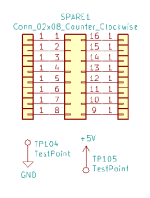80186 Enthusiast
Experienced Member
- Joined
- May 18, 2023
- Messages
- 53
WARNING: lots of text and images!!!
Specs:- CPU: Intel 80188
- RAM: 640k SRAM
- ROM: W27C512-45Z 64K EPROM
- VDP: TMS9918A
- VRAM: 16k SRAM
- Keyboard Controller: Intel 8279
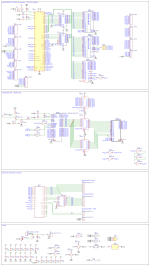
all PCB layers (No GND planes)
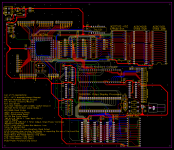
All PLB layers (with GND planes):


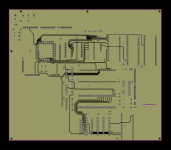
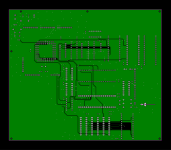
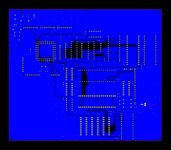
PCB 3D View:


Main Text of this Post:
Hello! after some time of trial and error, I've made this PCB! In my previous posts, I've asked questions on how the CPU should be wired up to the VDP and Keyboard controller, after receiving a handful of help, I was able to combine all of my knowledge into one schematic! after that, I made this PCB!
If you look at the image that shows all of the PCB layers with no GND planes, you can see a lot of vias that don't appear to be apart of any trace. That's because those are grounding vias! They help provide a stronger GND signal to areas where GND cant reach, so I tried to place them wherever grounding signals were needed! I've seen other PCBs have these (Like hard drive PCBs for an example). however, you can see that the CPU was used to be labeled as the CMOS version. I changed the Label after I found some regular 80188 CPUs on eBay that were cheaper than the CMOS variants.
Why did I call this the "essentials" prototyping machine? Because to me, the essentials to a computer is simply a keyboard controller and Video output. The last PCB I have to make is the Keyboard PCB. I still need to make the Keyboard layout, I'll make a different post about that in the future. After I create the Keyboard Layout, I'll study x86 assembly more closely and write a program that displays whatever symbol I type on the keyboard, a pretty simple test if you ask me. Why is this computer called the "SeaOtter"? I was at SeaWorld and I saw a SeaOtter and I thought "Wouldn't be cool if I called my Computer project series that?". The computer model name itself is SeaOtter I188-640
Side Project: Installing the 8086 x86 version of MSBASIC on this computer, that should be a pretty amazing test to see if my computer is ready for an OS or not. Imma hope it works. Let me know if this is possible or not!
As always, if you see somewhere I messed up, either in the Schematic or PCB design, please tell me in the comments below! Any help, information and advice will be thanked and appreciated! Thank you guys for reading!

